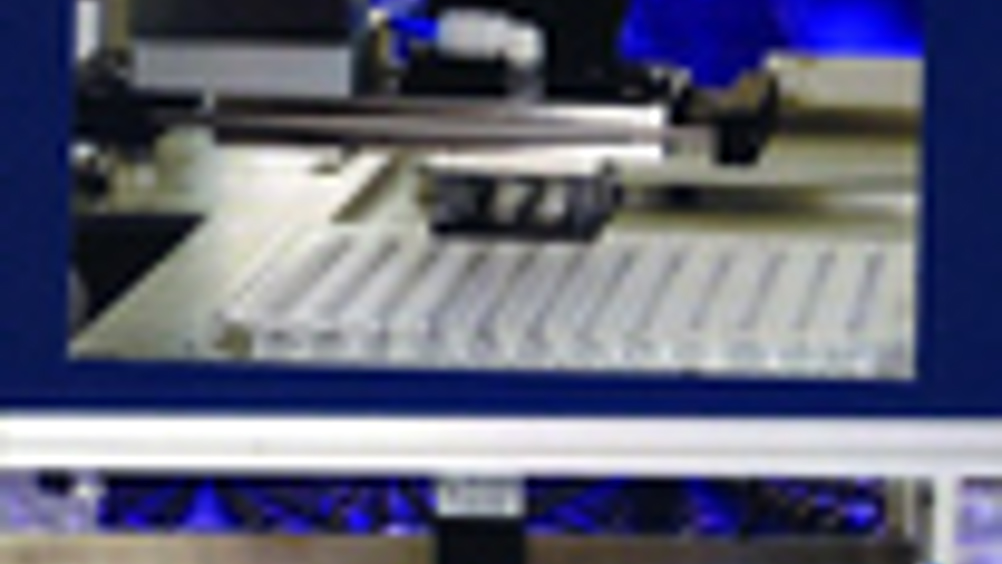Pick-and-place machine is spot on
A novel pick-and-place machine that took more than three years to develop has the potential to redefine biological research. Dean Palmer investigates

A novel pick-and-place machine that took more than three years to develop has the potential to redefine biological research. Dean Palmer investigates
Edinburgh-based firm Arrayjet has developed a prototype pick-and-place liquid handling system that could completely redefine biological research. The machine is currently undergoing field trials, although production of the first models has already started.
The breakthrough comes from the speed and volume of biological samples that the machine is capable of handling. The system picks and places the samples on three-inch by one-inch microscope slides, or microarrays. It picks up liquid samples from well plates and deposits them using standard ink jet print heads. The resulting 100-pico litre sample 'spots' are much smaller than some sample sizes and therefore use less biological fluid.
The machine's accuracy is critical in terms of both sample placement and subsequent information recovery. "We were looking for an accuracy of ±5( or better," explained Cameron Kennedy, senior mechanical engineer at Arrayjet. "This would enable us to place around 30,000 dots on each slide and, more importantly, it would help us determine accurately where each sample was located."
According to Kennedy, Arrayjet was originally set up by a Cambridge physicist, Dr Howard Manning and Prof. Peter Ghazal and Dr Douglas Roy, molecular biologists from the University of Edinburgh. The aim was to develop robotics using ink jet print heads to make biological microarrays.
Central to the development of the new machine were high accuracy linear motion components. As Kennedy remarked, "they were utterly critical - everything was based around them." In total, six SHS and two SRS LM guides were incorporated into each machine along with a number of ballscrews and linear bearing units, all supplied by THK UK. These components manoeuvre the print head over the well plates for sample loading and then move it over the slides to deposit the liquids onto them. Accuracy, consistency and reliability were Arrayjet's key criteria when selecting a suitable supplier.
"We wanted linear motion parts that wouldn't need servicing during the lifetime of the machine," recalled Kennedy. "We considered a roller system but we couldn't tolerate the inaccuracies a system like that would throw up. We needed consistent accuracy and so we opted for THK."
Among other linear components, the machine uses THK's advanced caged ball technology. Here, equal spacing of the balls in the block and the retention of the lubricating grease between the balls offered a number of advantages for Arrayjet over conventional linear guides, including reduced noise output, minimal variations in rolling resistance and high speed positioning. The units also provided precise, smooth linear movements and long term maintenance-free operation.
As Kennedy concluded: "We got exactly what we were looking for and that was high accuracy. There is a lot of innovation in our machine and I simply do not have the time to worry about the linear motion side of things. So I opted for the best available and that was THK's guides and rails."
Pointers
* The high accuracy, prototype pick-and-place liquid handling machine was designed by Scottish firm Arrayjet and took more than three years to develop
* Linear motion components were critical to the development of the machine and ensured smooth, accurate, consistent movement and minimal maintenance
* The machine picks up liquid samples from well plates and deposits them using standard ink jet print heads. The 100-pico litre sample 'spots' are much smaller than some sample sizes and so use less biological fluid










